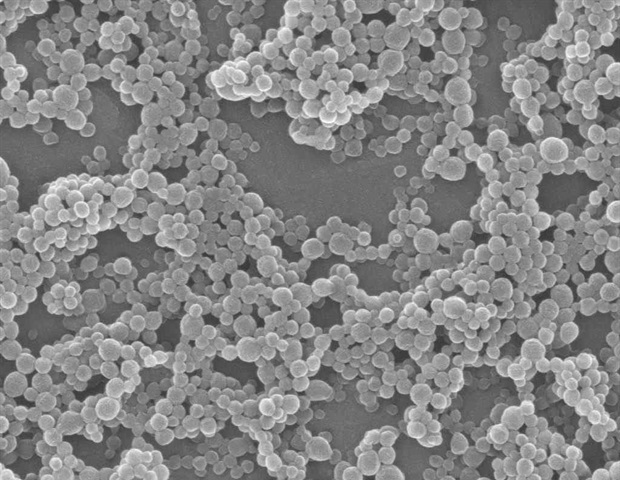Large study finds that chewing xylitol gum twice daily during pregnancy reduces risk of preterm birth in regions with high rates.
 Study: A cluster randomized trial of xylitol chewing gum for prevention of preterm birth: The PPaX trial. Image Credit: Zaruna/Shutterstock.com
Study: A cluster randomized trial of xylitol chewing gum for prevention of preterm birth: The PPaX trial. Image Credit: Zaruna/Shutterstock.com
In a recent study published in Med, a team led by scientists from the Baylor College of Medicine explored the effect of using xylitol-containing chewing gum during pregnancy to prevent periodontal disease and subsequent preterm births and low birth weights in infants.
The study examined whether this intervention, in combination with regular prenatal and oral health guidance, could reduce adverse birth outcomes by minimizing the inflammation associated with periodontal disease in pregnant women in Malawi.
Background
Periodontal disease is an infection of the gums that has been increasingly linked to adverse pregnancy outcomes such as preterm births and low birth weight in newborns. It is believed that oral infections during pregnancy can trigger systemic inflammation, which could potentially impact fetal development. Studies suggest that bacteria from gum disease may also enter the bloodstream and cross into the placenta, inducing harmful inflammatory responses in the fetus.
Although interventions such as dental cleanings have been explored, the findings from these studies have been inconclusive, possibly due to the timing and invasive nature of these treatments. However, xylitol is a natural sugar alcohol that has shown promise in inhibiting harmful oral bacteria and reducing inflammation. It could potentially offer a simpler, less invasive approach to managing periodontal health in pregnant women, especially in regions such as Malawi, where oral healthcare access is limited.
About the study
In the present study, the researchers conducted an open-label, cluster-randomized, controlled trial involving over 10,000 pregnant women enrolled at eight health centers in Malawi. The sites were matched and randomly assigned to either the control group, which received routine prenatal and oral health education, or the intervention group, which received the same education along with xylitol-containing chewing gum.
The participants in the intervention group were instructed to chew the xylitol gum twice daily, starting early in pregnancy and continuing through the antenatal period. The trial aimed to assess the gum's effect on reducing the rates of preterm births (delivery before 37 weeks) and low-birth-weight deliveries (newborn weight below 2.5 kilograms), which were defined as the primary outcomes.
Participant adherence to the intervention was monitored through self-reports at follow-up visits, although only a third of the participants in the xylitol group consistently reported adherence to the gum regimen. In addition to the primary birth outcomes, the study also tracked secondary outcomes, including neonatal mortality and improvements in gum health.
Additionally, the study included dental evaluations, which were conducted twice during the trial to monitor the changes in periodontal health, with the primary focus on reducing preterm birth-associated inflammation. Throughout the study, health data was collected from all the participants to ensure a balanced analysis.
The researchers employed generalized linear mixed models to compare outcomes between groups. Additional adjustments for site-based characteristics were made to minimize the biases that could arise from differences in local healthcare access and conditions.
Results
The researchers found that chewing gum containing xylitol during pregnancy was associated with a lower risk of preterm birth and low birth weight in newborns. The results showed that the percentage of preterm births in the intervention group was 12.6%, while the control group had 16.5% preterm births, indicating a significant reduction in premature deliveries associated with xylitol gum use.
Similarly, only 8.9% of infants in the xylitol group had a birth weight below 2.5 kgs, compared to the 12.9% observed in the control group. This showed that xylitol gum is also effective in reducing the risk of low birth weights in newborns.
The intervention also showed a positive impact on neonatal outcomes, with a decrease in neonatal mortality rates in the xylitol group. Furthermore, although the adherence to the gum regimen was moderate, participants who followed the gum intervention closely demonstrated significant benefits in the primary outcomes.
Additionally, improvements in oral health markers were observed among the participants in the xylitol intervention group. Reduced gingival bleeding was noted, indicating a decrease in inflammation associated with periodontal disease.
Conclusions
In conclusion, the trial demonstrated that xylitol-containing chewing gum could significantly reduce the risks associated with periodontal disease among pregnant women, such as preterm births and low birth weight in newborns. This intervention was found to be of particular value in low-resource regions, such as Malawi.
The intervention also showed positive impacts on both neonatal outcomes and maternal gingival health. Furthermore, despite moderate adherence rates, xylitol gum appears to be an effective, affordable, and a feasible option for improving perinatal health.
Journal reference:
- Valentine, G. C., Antony, K. M., SangiHaghpeykar, H., Wood, A. C., Chirwa, R., Petro, S., Dumba, M., Nanthuru, D., Shope, C., MlothaNamarika, J., Wilkinson, J., Aagaard, J., Aagaard, E. J., Seferovic, M. D., Levison, J., Kazembe, P., & Aagaard, K. M. (n.d.). A cluster randomized trial of xylitol chewing gum for prevention of preterm birth: The PPaX trial. Med. doi:10.1016/j.medj.2024.10.016
https://www.cell.com/med/fulltext/S2666-6340(24)00414-8

 3 hours ago
1
3 hours ago
1















.png)

.png)
.png)
.png)













 English (US) ·
English (US) ·  Hindi (IN) ·
Hindi (IN) ·